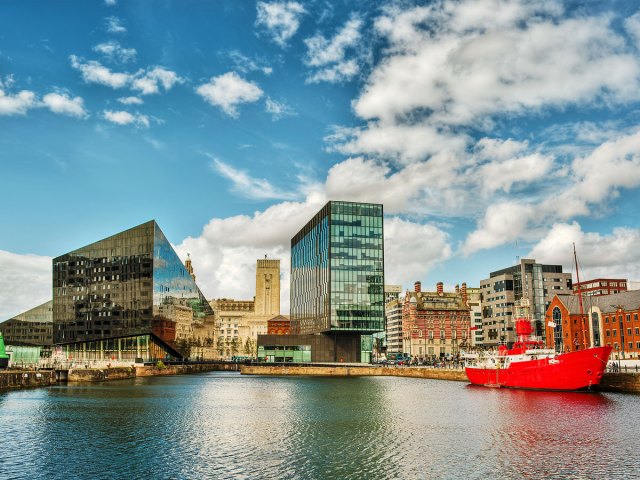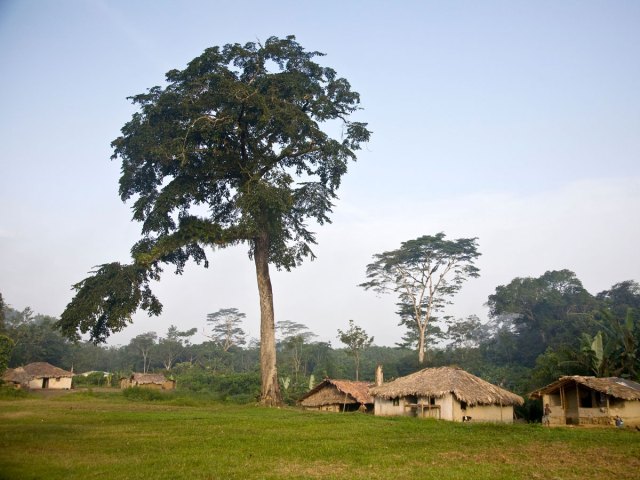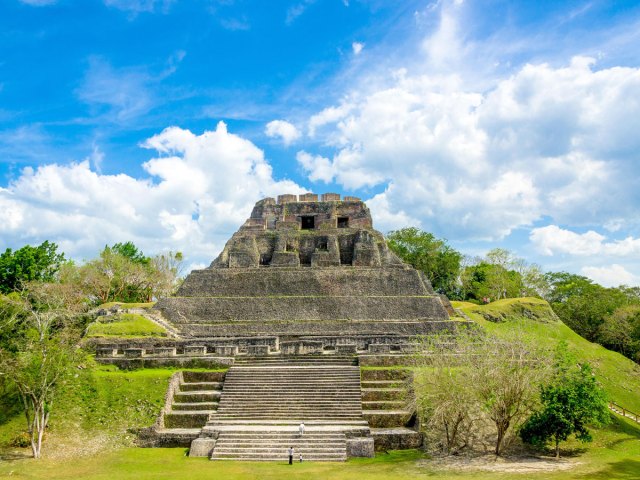Since the metric system was first adopted by France in 1795, it has become the preferred standard of measurement for the vast majority of world nations. The system utilizes units such as meters for length, kilograms for mass, and liters for volume. However, there is a small batch of countries that still use imperial units such as feet, pounds, and ounces. Some of these rare countries have pledged to convert to the metric system in the near future, though that process can be a lengthy one. For the time being, here are six countries you might visit that use imperial measurements.
United Kingdom

The British Imperial System was recorded in written statutes as far back as the 14th century, when a yard was defined as three feet and a foot as 12 inches. The U.K. later adopted these imperial units on a national scale with the Weights and Measures Act of 1824. This remained the standard throughout Britain and its territories until 1965, when the country formally switched to the metric system to align with the rest of the European Union. However, after leaving the EU in the wake of Brexit, new efforts have emerged to reimplement the imperial system nationwide.
Given that the United Kingdom has wavered back and forth between imperial and metric, it’s no surprise that there’s some mixing and matching between the two systems in English culture. One prominent example of how the British use imperial units are pints, which are the standard measurement for glasses of ale served up in local pubs. However, it should be noted that a British imperial pint (20 fluid ounces) is slightly larger than the U.S. customary pint (16 fluid ounces) that it inspired. U.K. roadways are another example of how imperial units are still used throughout the country. Speed limits are displayed in the imperial miles per hour, even though gasoline is sold in metric liters.
United States

In 1832, the U.S. adopted a system of weights and measures still in use today. The United States Customary System — based on the similar imperial-based system used in the U.K. from 1824 to 1965 — established official measurements such as the yard equalling 36 inches. This isn’t to say that the U.S. has completely shied away from using metric measurements, however. Congress passed the Metric Conversion Act in 1975, which stated that metric was the “preferred system of weights and measures for United States trade and commerce,” while still allowing for the use of U.S. customary units in everyday life.
Interestingly, many places throughout the U.S. have interwoven imperial measurements with their local identity. Take, for instance, Denver, Colorado, which is nicknamed the “Mile High City” because it sits 5,280 feet above sea level. In fact, the 13th step of the state capitol is located exactly 5,280 feet high, and is a popular local attraction.
Liberia

The West African country of Liberia adopted the imperial system during its time as a U.S. colony in the first half of the 19th century. The country achieved independence in 1847, though it still maintained imperial units as the standard local measurement. After nearly two centuries of relying upon imperial units, the Liberian government finally announced plans in 2018 to convert to the metric system. However, that conversion process remains ongoing today.
Given its history as an American colony and its use of English as an official language, Liberia is easier to navigate for English-speaking globetrotters than other African nations. If you find yourself in Liberia, it’s worth visiting Sapo National Park, the country’s only national park. This awe-inspiring nature preserve was established in 1983 and is home to diverse wildlife such as elephants and pygmy hippos. For a memorable cultural experience, visit the bustling Waterside Market in the capital city of Monrovia (named for U.S. President James Monroe) to purchase handmade wares from local merchants.
Myanmar

Back when it was known as Burma, the Southeast Asian country of Myanmar was subject to British rule and, in turn, adopted the British imperial measurement system. After achieving independence in 1948, the country remained largely isolated from signing any diplomatic treaties. This isolation meant Myanmar never entered into any international agreements that would have required adopting the metric system, and so the imperial system stuck. However, in 2013, the country’s deputy minister for commerce announced plans to convert over to metric in an effort to facilitate international trade, but the process remains ongoing.
If there’s one location you need to see in Myanmar, it’s the impressive Shwedagon Paya, which is considered one of the most sacred sites in all of Buddhism. This 326-foot-tall stupa (a term for a sacred mound in the Buddhist religion) is adorned with gold leaf, diamonds, and other valuable gems. It’s believed that the original stupa located on this site was built between the sixth and 10th centuries, and it’s said to now contain sacred remnants of the Gautama Buddha’s hair.
Belize

Belize is the only English-speaking country in Central America, and English is the official national language. This Anglo-inspired culture dates back to the country’s time as a colony of British Honduras in 1840. Belize later became a crown colony in 1862, before finally achieving independence in 1981. During this time, it adopted many English customs, including imperial units for measurement.
Belize is located on the shores of the Caribbean Sea and has some of the most stunning coastline in the entire Western Hemisphere. Belize also contains ancient Maya ruins dating back millennia, including Xunantunich, which became the first Maya ruins to open to the public in 1950. This incredible archeological site was abandoned by the Maya peoples around 1,000 years ago, though many of its temples and mounds remain largely intact. It’s also well worth visiting Belize’s Great Blue Hole. This incredible 407-foot-deep hole is surrounded by a coral reef and is a bucket list item for many divers. The Great Blue Hole is believed to have formed around 10,000 years ago at the end of the last ice age.
Palau

Palau is one of several Oceanic island nations — along with the Marshall Islands, Micronesia, and Samoa — to still rely on the imperial system. All of the aforementioned nations (besides Samoa) became United Nations Trust Territories in the wake of World War II and were managed by the United States. Because of this, the nations all utilized the imperial system for several decades, even after gaining independence throughout the 1980s and 1990s.
Despite being the 16th-smallest nation in the world by area (measuring just 177 square miles), Palau has plenty to see within its narrow borders. The entire country is made up of around 200 individual islands, making it among the world’s foremost destinations for diving expeditions. In fact, Palau has earned the nickname of “the underwater Serengeti,” given how much there is to explore underneath the ocean surface. The waters are full of diverse marine life including manta rays, sharks, and tropical fish, as well many World War II-era shipwrecks.
More from our network
Daily Passport is part of Inbox Studio, which publishes content that uplifts, informs, and inspires.
















